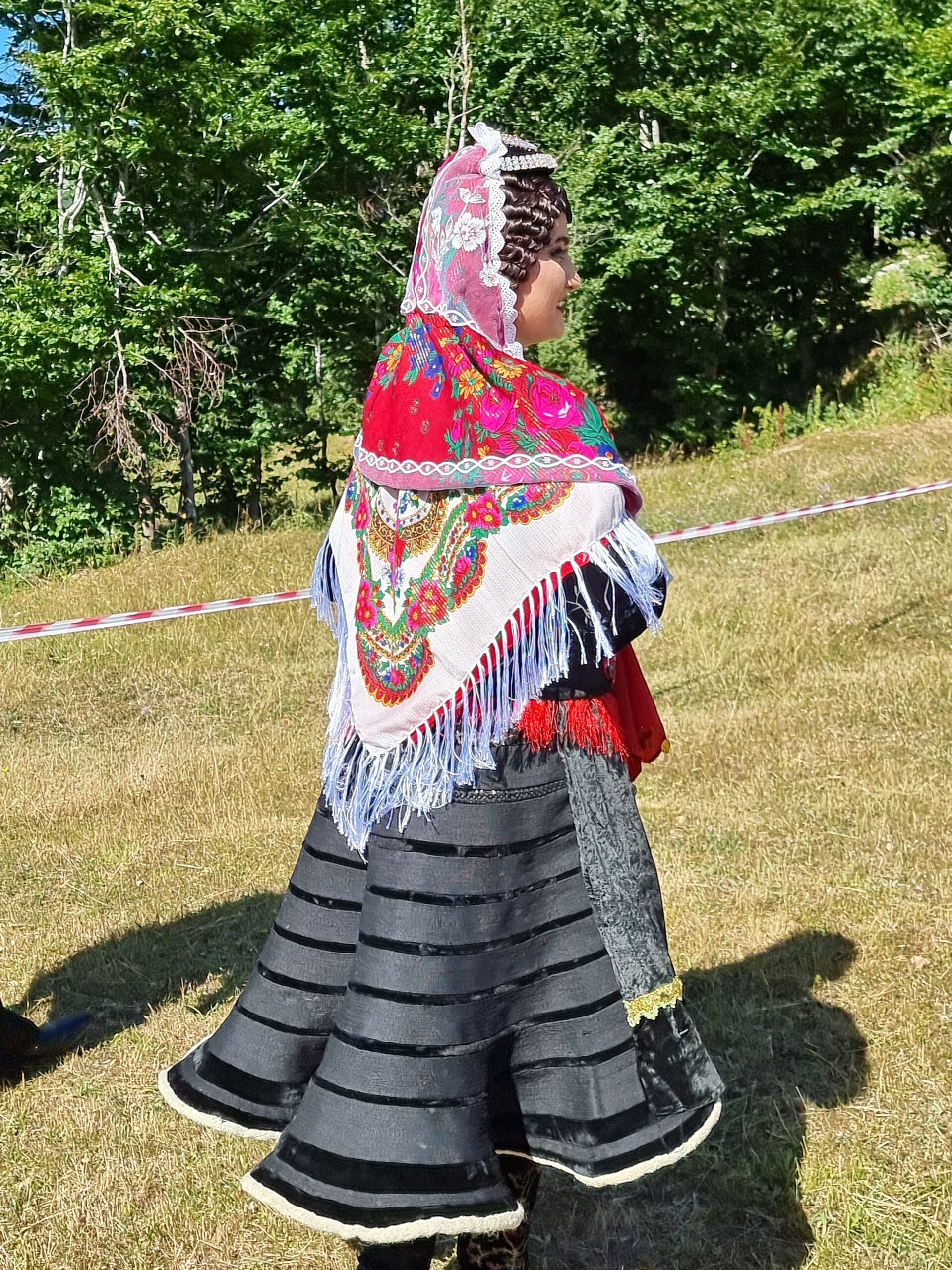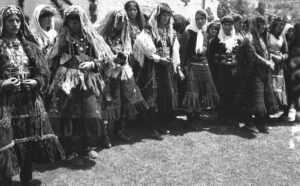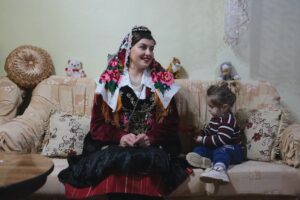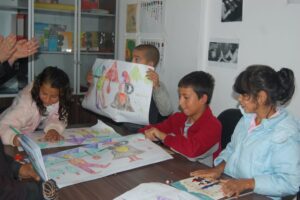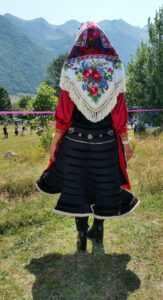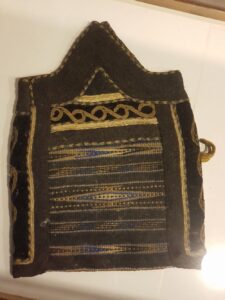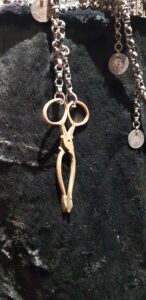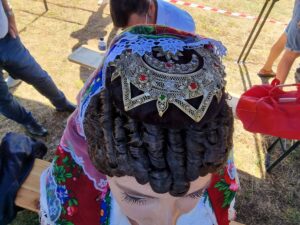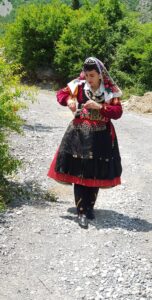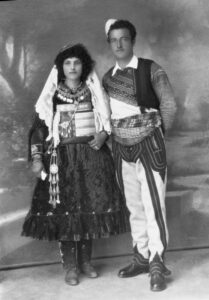Xhubleta is a handmade corrugated bell-shaped clothing. It is considered an identity element of highland women in Northern Albania. The particular morphology and semiotics of xhubleta reveal the admired craftsmanship reflected in this garment.
It involves specific skills in preparing the felt, cutting, stitching, and embroidering symbolic figures as well as assembling all pieces that make up xhubleta. Nowadays, it mostly comes in black with colorful embroidered motifs.
Xhubleta is a typical garment for women and girls, with some specific features distinguishing the social status of either group. Unmarried girls wear thick, stiff, white wool garments with horizontal black stripes. Married women wear a bell-shaped skirt, typically corrugated and accentuated at the back. It comprises various intricate components and narrow felt strips laid horizontally and interlaced by layers of spiku – a special type of thread made from a complex braid of sixteen separate strands of wool. Xhubleta is hung from the shoulders by two wide straps. The main component of xhubleta is the felt.
The semiotic dimension of xhubleta already inherited is reflected today in wearing this costume in important events such as weddings, and festivities (especially Logu i Bjeshkëve, a social event serving as a meeting platform and revived in the 1990s), and death rituals.
In the past, all knowledge and skills surrounding the xhubleta were passed down from mother to daughter for generations of women as girls aimed to prepare their dowry. Today, few women have knowledge of the whole process and moreover, family-based transmission is rarely seen. Also, the lack of organic wool suitable for manufacturing felt has led to the use of new types of wool. However, this suitability allowed transmitting the xhubleta craftsmanship, providing a sense of continuity without changing its significance to the community.
Manufacture of the xhubleta goes through these processes: Shearing cattle, carding the wool, spinning it with a spindle, dyeing the wool thread, weaving spiku, working of certain pieces on the loom, stitching the pieces with wool thread and metal thread, making the ornaments with silver and gold, embroidery of pagan elements, embroidery of decorative elements.
When girls got married, they took with them up to five xhubleta-s ranked as:
– “The best”, which was held for up to five years.
– “The good”, there was very little difference with the first one.
– “After the good” most of the iva-s (horizontal strips) were unadorned.
– “Before the bad” and “The bad” were daily used and had no embellishments.
The parts of the xhubleta dress: the xhubleta, which comes in a vast and bell-shaped skirt, kraholi (jacket), sleeves, neckband, girdle, postava (belt), pështjellaku (apron), woolen socks “kallcet”, jeleku (bodice), the scarf or headdress, the waist scarves, kapica (headpiece), ornaments and jewelry of silver.

